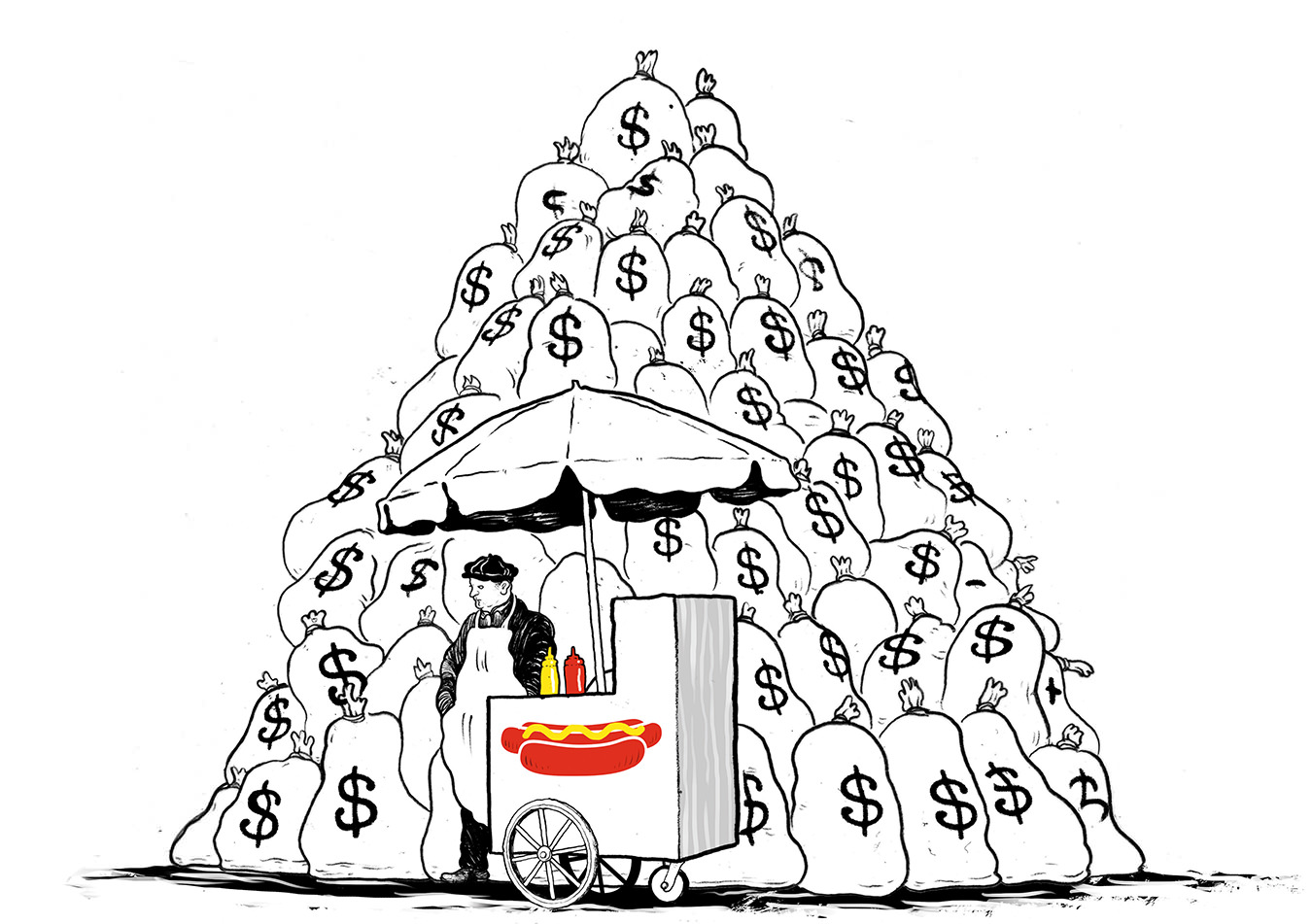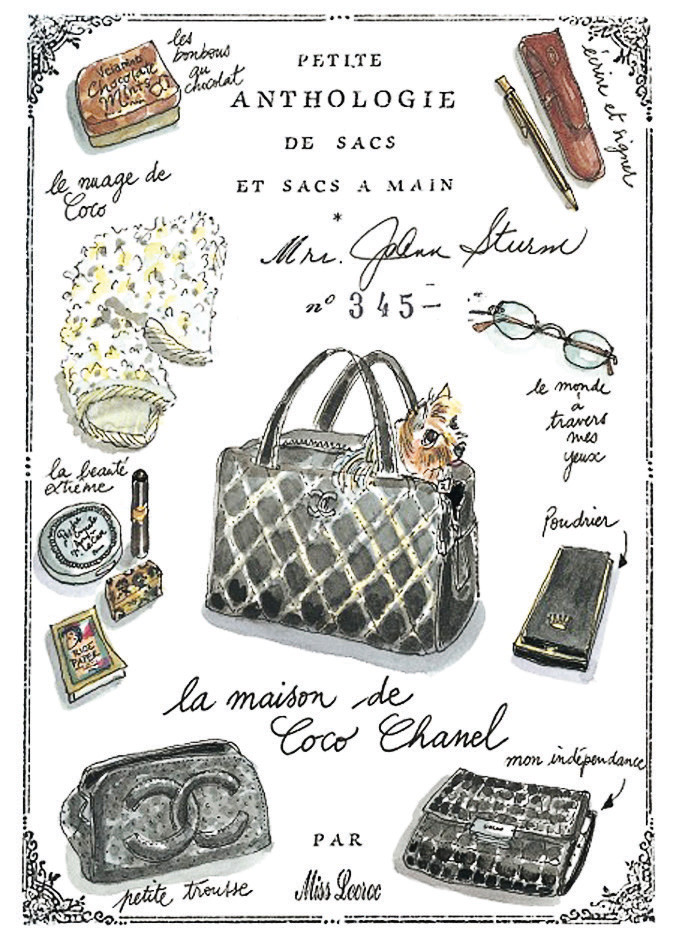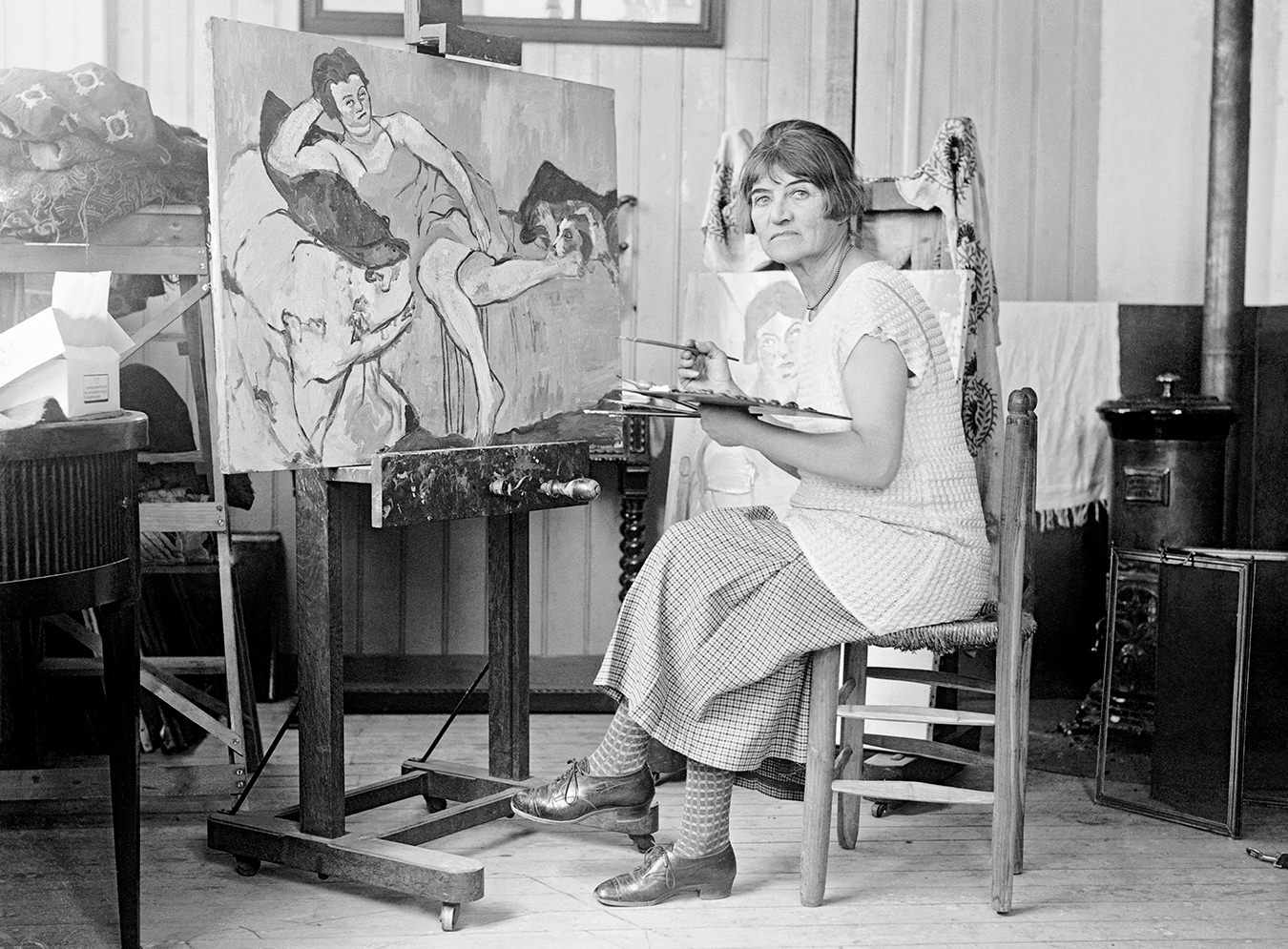-
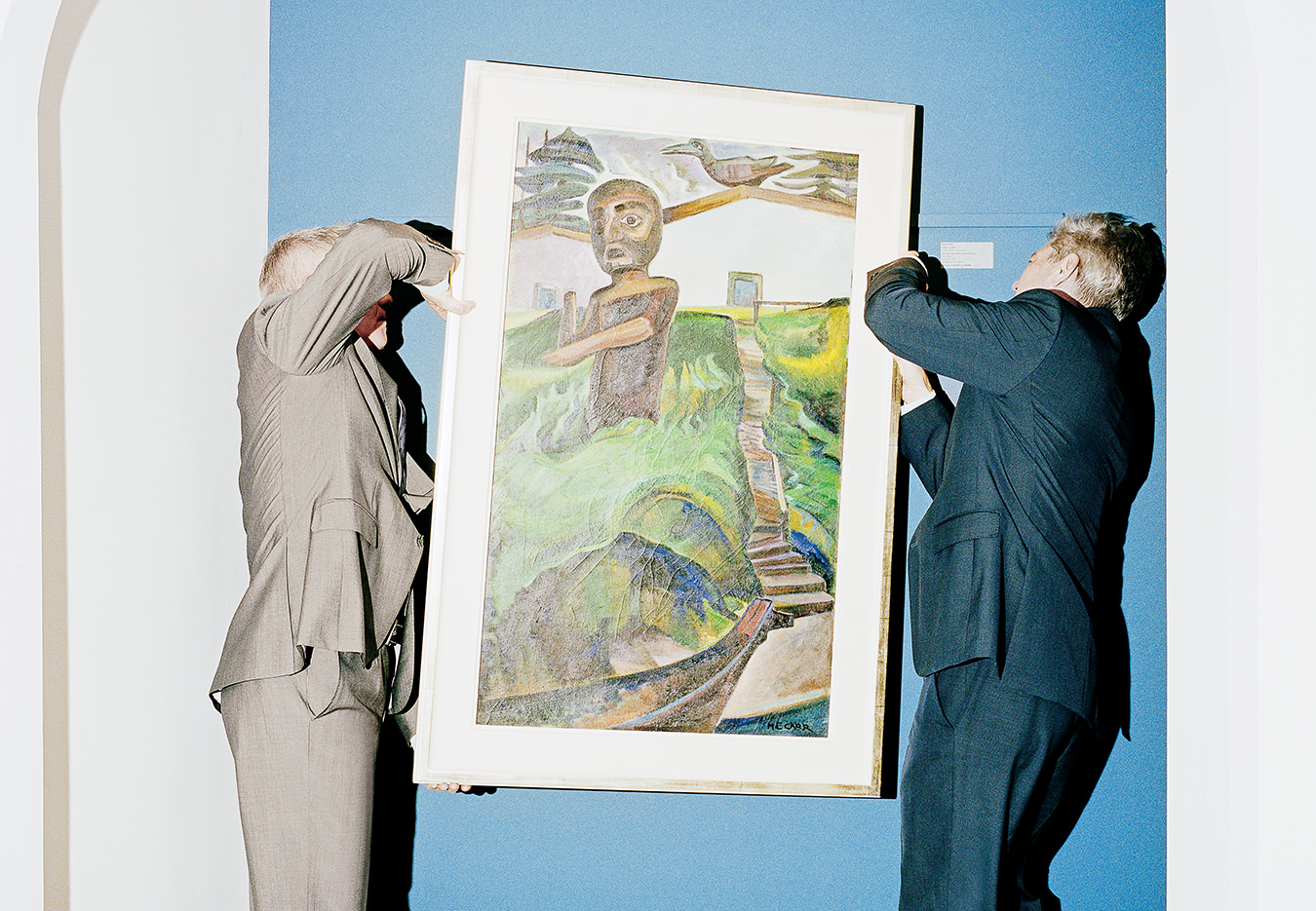
The Heffel brothers lift The Crazy Stair (The Crooked Staircase), 1928-1930, an Emily Carr painting that sold for a record-breaking $3.39-million at Heffel’s fall auction last year.
-
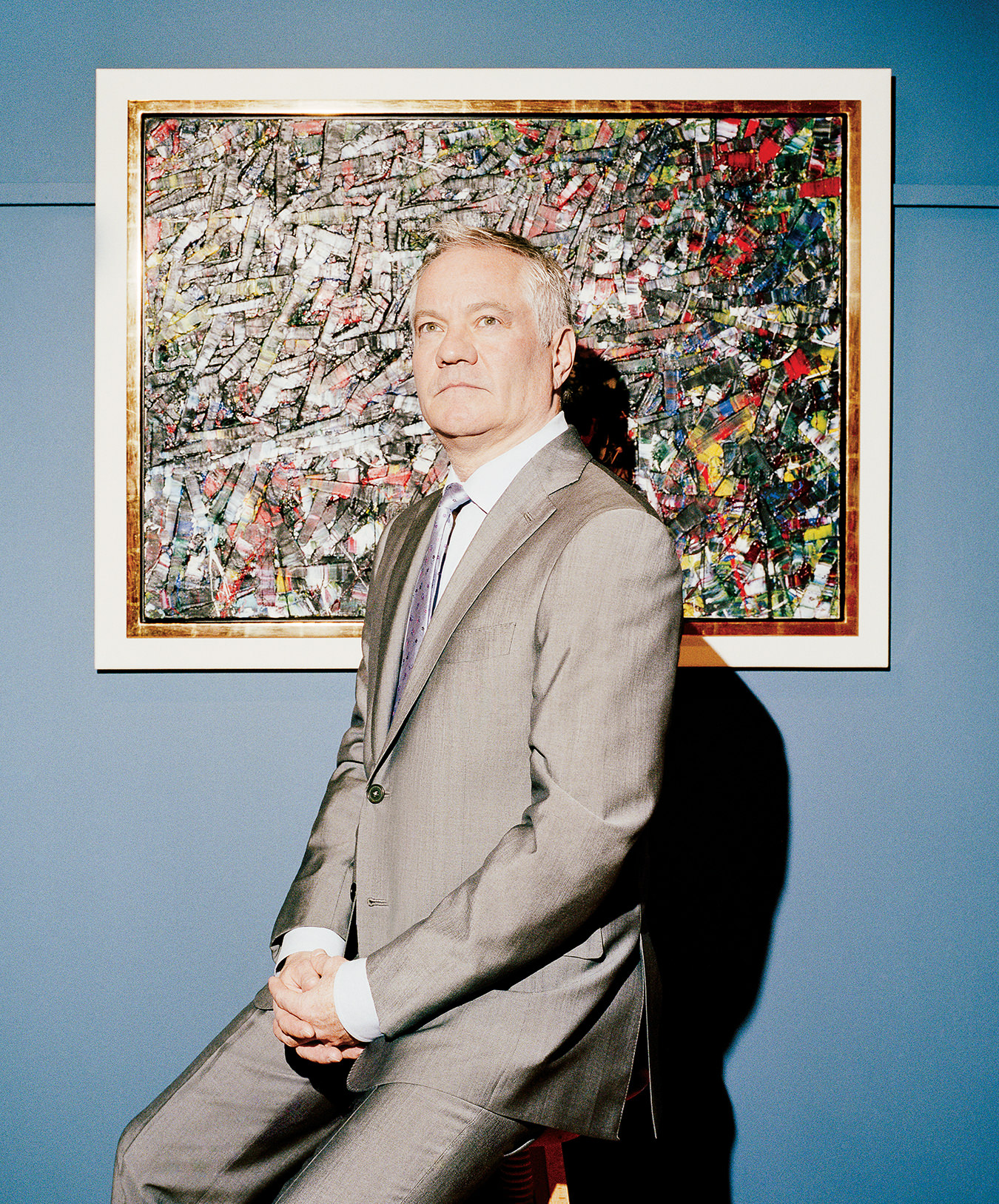
David Heffel with Sans titre, 1954, by Jean-Paul Riopelle.
-

Robert Heffel with À claire-voie, 1958, by Jean-Paul Riopelle.
-
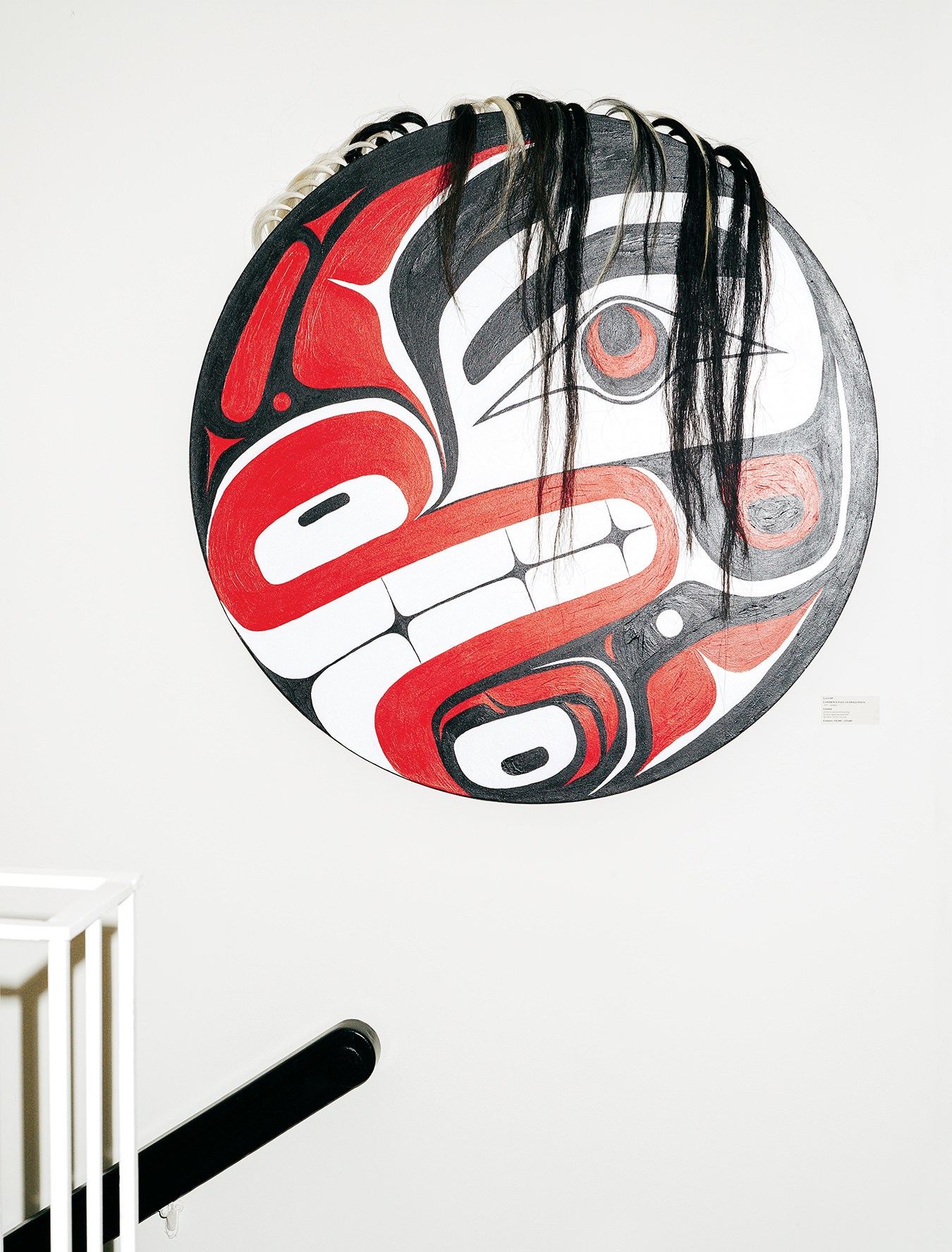
Untitled by Lawrence Paul Yuxweluptun, 2007.
-
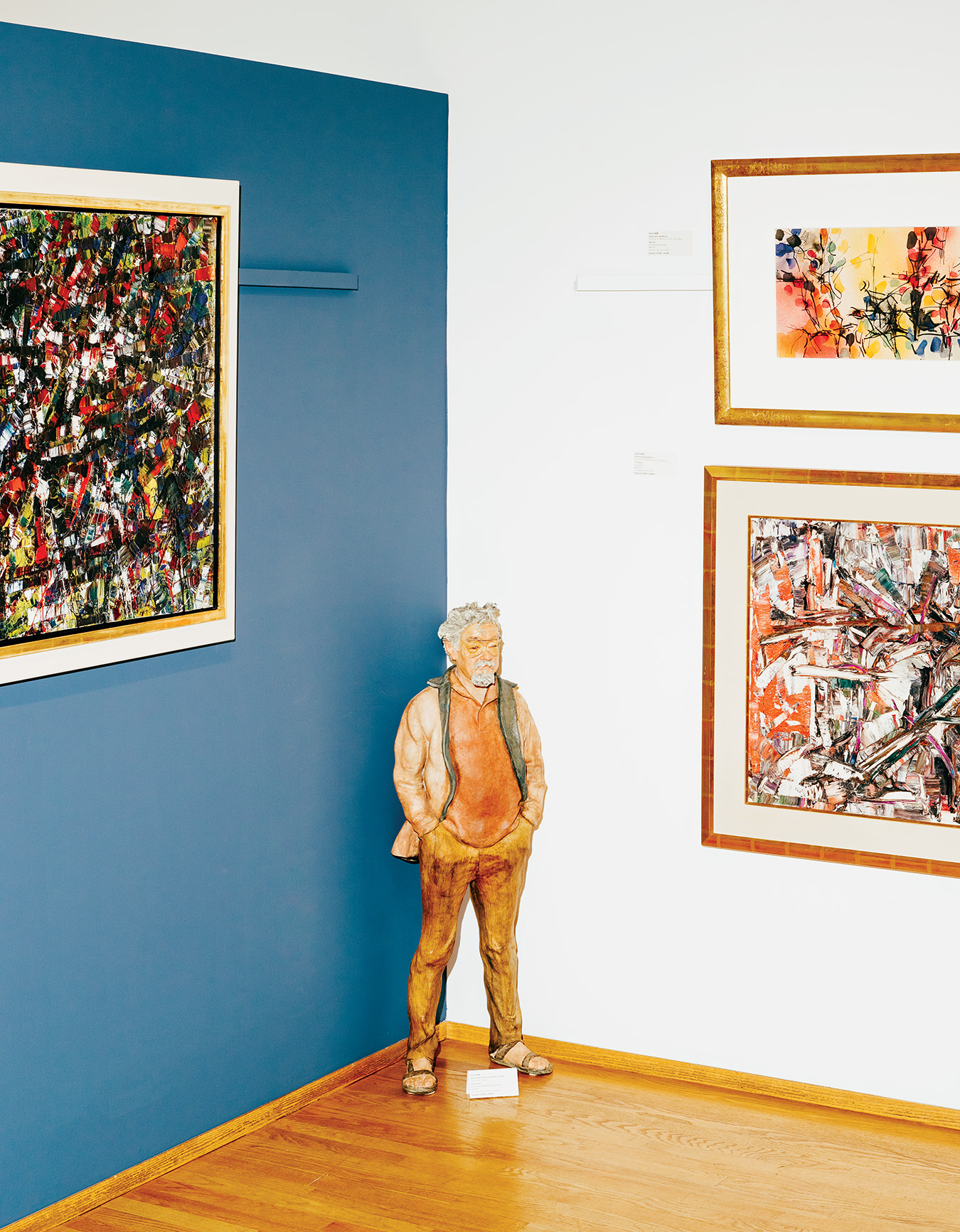
Artworks by Jean-Paul Riopelle surround David Suzuki, 2006, by Joseph Hector Yvon (Joe) Fafard.
The Heffel Brothers
Artistic legacy.

On the October morning in 1987 that Kenneth Heffel was scheduled to fly to Switzerland to look at paintings, he planned to stop in at his gallery in Vancouver. His younger son, Robert, would take him to the airport. When Ken failed to appear at the gallery and didn’t answer his phone, Robert drove to the house in Shaughnessy. No one answered the door. Robert found his dad on the bathroom floor, dead of congestive heart failure.
Ken Heffel had packed a lot into his 52 years. “He was born in 1935, middle of the Depression,” recalls his older son, David. “My grandparents saw a piece in the Edmonton Journal: ‘These Eight Tiny Tads Need Homes.’ My grandmother circled one of the faces and wrote ‘Ken’ beside it. They literally just went down to the hospital and picked him up.” Things were simpler then.
“I’ve spent a lot of time trying to figure out our dad,” says David. “As far as I know, he never looked into his own background. My mom told me an older man used to show up for all his baseball games and sit by himself in the stands. She always wondered if that was his natural father. Maybe because he was adopted, he was determined he was going to be somebody. He was driven to be successful.”

David Heffel with Sans titre, 1954, by Jean-Paul Riopelle.
Succeed Ken Heffel did, at everything he turned his hand to. He was a good enough catcher that the Cincinnati Reds signed him, and he played a few seasons in the minor leagues. He started a little welding company that grew into Great West Steel Industries and made him a millionaire. He bred Hereford cattle, and he began buying and selling Canadian art, astutely putting together a major collection. Turning his passion into his business, he sold his 2,000-acre ranch near Camrose, Alberta, bought a former Royal Bank of Canada building on Granville Street in Vancouver from Nelson Skalbania, and opened the Heffel Fine Art Auction House.
The boys grew up in a comfortable British Properties (a residential area in West Vancouver, British Columbia) house that contained what Robert describes as “an important collection of paintings by the Group of Seven and their contemporaries.” It’s no surprise that an Emily Carr painting resided in the home’s family room: Alert Bay, 1912. “We got to look at it every day,” says David. “As kids, you absorb that environment.”
Despite their youth, then, they weren’t entirely unprepared to take over when their father died. Robert was 22, recently graduated with a degree in art history at the University of British Columbia. “I loved the academic aspect, the way a painting captures both history and culture,” he says. “But of course, that’s very different from the business side.” He’d worked at the gallery, doing a bit of everything, and had even begun to sell the odd painting.
David, a couple of years older and employed in the film industry in Toronto, had also worked at the gallery during university, cleaning, crating, and shipping, as well as doing some groundwork for his dad’s Vancouver gallery. And a few years earlier, rather presciently as it turned out, Ken had hired his best friend, the art dealer Peter Ohler, to teach the boys about the gallery business—“retail detail,” says Robert. Sharing their father’s love of art and having the cushion of an inheritance and what David calls “the confidence of youth,” they embraced their father’s legacy and set to work. In the years since, they’ve transformed the art business in Canada and become the dominant force in the sale of fine art.

Robert Heffel with À claire-voie, 1958, by Jean-Paul Riopelle.
In the 1970s, most art sold privately. Art auctions were mainly for the trade, not the everyday collector. Looking back, the Heffels’ decision to concentrate on live auctions (their first was in November 1995), rather than private retail sales, was a turning point. So was their decision in 1999 to move the auction process online. The Heffels were ahead of the competition, and it wasn’t long before the Internet, as David explains, “allowed us to sell 500 paintings in the time it used to take us to sell 10.
“There were definitely growing pains,” he adds in the deliberate, thoughtful, self-effacing way both brothers speak. “Our balance sheet was static for the first five or six years. But we didn’t have any fear of failing. Our dad had set an example of coming from nothing and doing well, and we didn’t doubt we’d be successful. There was just a change in lifestyle—all of a sudden we were working 12 or 14 hours a day.”
Besides developing their web presence and introducing monthly auctions (along with the major spring and fall sales), the brothers took a scholarly approach to the work, using academic experts like Lisa Christensen, Dr. François-Marc Gagnon, and Dr. Mark A. Cheetham to produce a detailed essay about each painting. The Heffels also create and distribute high-quality colour catalogues, which are a major expense, but an effective promotional tool. And though investing in infrastructure and maintaining a state-of-the-art website is also costly, technology has been central to the Heffels’ success.
So has the mentorship and advice of the many collectors who’ve become friends over the years—people like Peter Brown, Jacques Barbeau, Stephen Jarislowsky, Michael Audain, Roy Heenan, and the late Dr. Donald Rix, as well as contemporaries like Paul Reynolds, Jonathan Hyman, and Bob Rennie.
Rennie, the most influential real estate marketer in British Columbia (who’s probably sold half the condos in Vancouver), is a long-time friend whose own involvement in art curiously parallels the brothers’. The Heffels started out as retail dealers, developed their marketing infrastructure, and moved online; Rennie started out selling individual homes, developed his sales infrastructure, and moved into project marketing. The brothers’ success has allowed them to establish a national presence; Rennie’s success has allowed him to put together a major collection of contemporary art and create the Rennie Collection at Wing Sang on East Pender Street in Vancouver. “The Heffels are a seamless team,” says the real estate mogul. “They’re knowledgeable, honest, and hard working. They’ve earned their very respected place in the art world.”

Untitled by Lawrence Paul Yuxweluptun, 2007.
Was there a tipping point, a moment at which the brothers realized they were changing the paradigm? “I’d say it had more to do with stubbornness and hard work than any single moment,” says David, who’s given to sports metaphors. “There’s generally a lot of work in the corners before the puck ends up in the net.”
Robert points to an auction in 2000 at which an Emily Carr (War Canoes, Alert Bay) sold for the first time for more than a $1-million. “She’s [Emily Carr] been a big part of our success,” he says, “and her star just continues to rise. I’d say that sale was the start of the bull market in Canadian art. It was the beginning of a good economic period, but it was also a case of a great painting coming up for auction. People took notice, not just in Canada but outside the country as well.”
Ever since, 20th-century Canadian art has been on a roll. The Heffels have sold more than 60 Canadian paintings for over $1-million. Meanwhile, Canada’s financial centre of gravity has moved west, and the art market has followed suit. And the dollar has become a safe-haven currency. Many foreign investors view Canadian art the way they view Vancouver condos—as a safe place to park wealth.
Our visual artists are taking their place in the world—the “Canadian” qualifier is evaporating.
Just as writers like Margaret Atwood, Michael Ondaatje, and Alice Munro and musicians like Neil Young, Joni Mitchell, and Leonard Cohen are widely celebrated, our visual artists are taking their place in the world—the “Canadian” qualifier is evaporating. You see it in the global success of the photo-conceptualists (Jeff Wall, Rodney Graham, Ian Wallace) and in the record prices that painters like Carr, Lawren Harris, Jean-Paul Riopelle, and E. J. Hughes are fetching in Heffel auctions.
At Christie’s summer sale last year in New York, a Jack Bush went for more than $600,000 (U.S.)—12 times the presale estimate. When the Dulwich Picture Gallery in London presented Painting Canada: Tom Thomson and the Group of Seven, the exhibition received stellar reviews, drew record attendance, and set new benchmarks for gift-shop sales. (The exhibition went on to the National Museum of Art, Architecture and Design in Oslo, Norway, followed by the Groninger Museum in the Netherlands, before arriving at the McMichael Canadian Art Collection in Ontario.) The Dulwich is mounting a solo Carr exhibition, Painting Canada 2: Emily Carr and the Indigenous Art of the North West Coast, come November, which will only drive prices for her work higher.
All of which portends a bright future for the Heffels. Their strategy of investing in infrastructure and opening galleries in Toronto and Montreal (as well as offices in Calgary and Ottawa) is paying off handsomely. From a staff of five in 1990, they’ve grown to 27 employees today. In Vancouver, Heffel is the only game in town. Yet the brothers have spent so much time in the East, and developed so many long-term relationships, that they’re not viewed there as Westerners. Their Sherbrooke Street gallery in Montreal and their success selling Quebec painters—Riopelle, Jean Paul Lemieux, Paul-Émile Borduas—have given them a high profile in that province.
Since 1995, Heffel Fine Art Auction House has auctioned off roughly $350-million worth of fine art. Almost two-thirds of fine art auction transactions in Canada now pass through them. No more telling evidence of their dominance can be found than Sotheby’s decision last year to shut down its Canadian auction operation and concentrate on private sales, leaving the Toronto-based Waddington’s as the Heffels’ only real Canadian competition.
Any advice for the novice collector? Robert suggests that monthly web auctions are a great place to begin building a collection. Because the secondary market for most living artists isn’t strong, a piece that had a retail value on the primary market of, say, $15,000 might have an opening bid of $9,000 at auction. Sometimes the piece will sell for less than the presale estimate. “Focus on a certain area, one that really appeals to you,” he says. “Become expert in that area. Buy good names. Buy pieces you really like by those names. That’s how we’ve seen buyers do well over a long period.
“Actually, a client was in just this morning with a David Blackwood. He bought the painting from us for $9,500 in the mid-nineties, just before we got seriously into the online stuff. He’s probably going to consign it to our spring auction. The preauction estimate would probably be $40,000 to $60,000, and that’s conservative. He bought it because he loved it, but he also believed he’d do well with it over time.”
It’s been said that you never really own a work of art; you simply become its custodian for a time. In the way that a great painting speaks to history and legacy, a family business does as well. As midlife moves squarely into the brothers’ view, it brings with it the question of succession. Many legendary Canadian businesses were established by a visionary founder, developed by the children, but then dissipated by a third generation of family members who took for granted the comforts of success without having assimilated the values and practices that made it possible.
The Sauder School of Business at the University of British Columbia educates entrepreneurial families about everything from governance and business advisers to wealth preservation. “Their family business program has been helpful in shaping our thinking,” says Robert. “They’ve had some great speakers. We’ve been working with a fellow at KPMG in Ottawa as well as advisers in Vancouver, putting in place structures and guidelines for succession.”
Both men still work hard, but having an expert staff allows them to delegate and make more time for themselves. Trim and athletic, they both pursue recreational activities with the same quiet ardour that characterizes their approach to work. David skis (snow and water), practises yoga, rides motorcycles (on-road and off), fishes, and surfs. He’s also started to paint.
Robert, an avid windsurfer in his youth—he used to spend weekends in Hood River, Oregon—continues with the sport, primarily in Maui. He and his wife, Jennifer, an interior designer, have a place in Spreckelsville, Hawaii, where Willie Nelson is a neighbour and Owen Wilson and Woody Harrelson are denizens. They have a teenage daughter, Ainsley. “She’s super artistic—she gets that from her mom,” Robert says with a chuckle. “She’s just started first year at the University of San Diego, where they have a really good fine arts program.”
David and his wife, Patsy, who is director of accounting at the gallery, have two teenage sons, Josh and Ryan. Like the grandfather they never knew, the boys love baseball. There’s a framed photo of Ken’s old catcher’s glove on the wall at their home in West Vancouver, and a pile of bats by the back door. “It’s funny,” says David, “the boys will see a great double play on TV and say, ‘Ken would have loved that.’ ”
On vacation last summer, David took his family to Boston and New York. “It was kind of a joint mission,” he says. “We saw as many baseball games as possible, and we visited as many art museums as we could fit in. Josh idolizes [Red Sox second baseman] Dustin Pedroia and wants to be a major league ballplayer. Ryan is in his second year of art history at UBC.”

Not long ago, in Montreal, David was given a tour of the art at the Power Corporation of Canada (a collection of the late Paul Desmarais Sr., who led Power Corp. as chairman and CEO from 1968 to 1996). “The curator, Paul Maréchal, is a walking encyclopedia about the collection, which is stunning,” he says. “I asked how he got interested in art, and he said he started out collecting coins and stamps. I told him Ryan collects baseball cards. We agreed that it’s part of the same passion—the quest for discovery, the excitement of sharing a prize find.”
Is there a thought that their children might succeed them? “At their age, you want to keep all the options open—you want them to find their own path,” says Robert. “But it’s nice that Ainsley spent some time at the gallery, helping out on Saturdays, and really seemed to enjoy it.”
David agrees: “You don’t want to force them into anything. You introduce them to the art world, educate them about the business, maybe start taking them around to artists’ studios, and see whether it’s something they have a feeling for. That said,” he adds, “developing a foundation for the future is something Robert and I have talked about a lot these past couple of years. Last year in Hawaii, we had our first-ever family meeting to talk about succession. One way or another, we hope to create a legacy for the Heffel name in the Canadian art world.”
Anyone less modest would realize that they already have.


